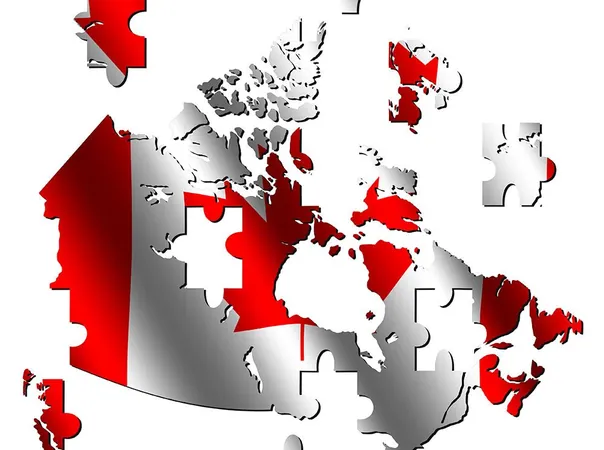
Shocking Trade Barriers in Canada: Internal Tariffs Nearing 25% - What's Happening?
2025-01-16
Author: Sophie
Introduction
While many Canadians have been focused on the looming international trade threats posed by former President Donald Trump, a startling internal issue is flying under the radar: Canada's own trade barriers, which amount to nearly a 25% equivalent tariff. As highlighted by Stéfane Marion, chief economist at the National Bank of Canada, it's high time we shift our gaze inward and examine the regulatory obstacles that hinder domestic commerce.
Imbalance Between Foreign and Domestic Access
According to a comprehensive 2019 study by the International Monetary Fund (IMF), Canada is failing to provide equitable access for its own businesses in comparison to foreign firms. The study reveals that, astonishingly, foreign companies frequently enjoy better entry into the Canadian market than local enterprises. This is a clear indication that our internal trading conditions are stifling homegrown businesses.
Lack of Progress in Dismantling Internal Trade Barriers
Canada has established trade agreements with over 40 countries since signing its first free trade pact with the U.S. in 1989. Yet, the progress made to dismantle internal trade barriers has been less impressive. The challenges stem from the unique regulations imposed by each province, which include various quotas, trucking requirements, and licensing hurdles. These non-geographic internal trade barriers collectively act as a tariff of 21% on Canadian businesses, significantly higher than the 3% burden faced by American companies.
Economic Benefits of Removing Barriers
The IMF emphasizes that the removal of these internal barriers could result in breakthrough economic benefits. By fully liberalizing trade in goods, we could see a national GDP per capita increase by 4%, with internal trade volumes matching those of international trade. This transformation could improve labor mobility, boosting employment rates in struggling provinces, particularly in Atlantic Canada, by an estimated 6%.
Criticism from Business Leaders
Chorine Pohlmann, executive vice-president of advocacy at the Canadian Federation of Independent Business (CFIB), has openly criticized the current state of interprovincial trade. In her recent appeal to provincial premiers, she emphasized the absurdity of it being easier for Canadian businesses to operate internationally than within their own country. "It’s a no-brainer. We need to reduce red tape, eliminate internal trade barriers, and alleviate the tax burden on our small businesses," Pohlmann urged.
Decline in Interprovincial Trade
The decline in interprovincial trade is concerning; it has dropped from 50% in the late 20th century to just 40% today. Marion stresses that we must halt the self-sabotage by overcoming these barriers if we are ever to unlock Canada's full economic potential.
Impact of External Economic Factors
In addition to these economic insights, market conditions have also recently shifted, with significant movements in stock markets following unexpected inflation data from the U.S. This indicates that while the government grapples with trade barriers, the financial markets are reacting to external economic factors that can influence Canada's economic health.
Call to Action
As Canadians brace for potential international tariffs, it's crucial to also demand action from our leaders to rectify the tortuous landscape of internal trade. In a world where agility and competitiveness are vital, Canada must not allow outdated regulations to undermine its economic prowess any longer.
Conclusion
Are you ready to join the conversation about transforming Canada's trade landscape? It's time for action!









 Brasil (PT)
Brasil (PT)
 Canada (EN)
Canada (EN)
 Chile (ES)
Chile (ES)
 Česko (CS)
Česko (CS)
 대한민국 (KO)
대한민국 (KO)
 España (ES)
España (ES)
 France (FR)
France (FR)
 Hong Kong (EN)
Hong Kong (EN)
 Italia (IT)
Italia (IT)
 日本 (JA)
日本 (JA)
 Magyarország (HU)
Magyarország (HU)
 Norge (NO)
Norge (NO)
 Polska (PL)
Polska (PL)
 Schweiz (DE)
Schweiz (DE)
 Singapore (EN)
Singapore (EN)
 Sverige (SV)
Sverige (SV)
 Suomi (FI)
Suomi (FI)
 Türkiye (TR)
Türkiye (TR)
 الإمارات العربية المتحدة (AR)
الإمارات العربية المتحدة (AR)